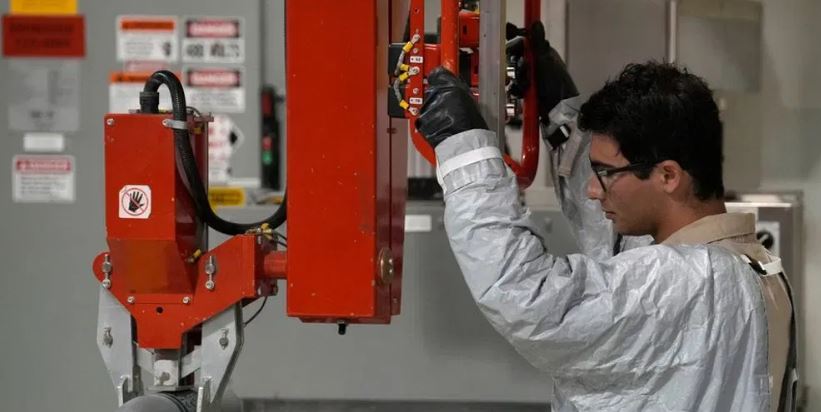
At a sprawling military installation in the middle of the rolling green hills of eastern Kentucky, a milestone is about to be reached in the history of warfare dating back to World War I.
Workers at the Blue Grass Army Depot are close to destroying rockets filled with GB nerve agent that are the last of the United States' declared chemical weapons and completing a decadeslong campaign to eliminate a stockpile that by the end of the Cold War totaled more than 30,000 tons.
The weapons' destruction is a major watershed for Richmond, Kentucky and Pueblo, Colorado, where an Army depot destroyed the last of its chemical agents last month. It's also a defining moment for arms control efforts worldwide.
The U.S. faces a Sept. 30 deadline to eliminate its remaining chemical weapons under the international Chemical Weapons Convention, which took effect in 1997 and was joined by 193 countries. The munitions being destroyed in Kentucky are the last of 51,000 M55 rockets with GB nerve agent — a deadly toxin also known as sarin — that have been stored at the depot since the 1940s.
By destroying the munitions, the U.S. is officially underscoring that these types of weapons are no longer acceptable in the battlefield and sending a message to the handful of countries that haven't joined the agreement, military experts say.
"One thing that we're really proud of is how we're finishing the mission. We're finishing it for good for the United States of America," said Kim Jackson, manager of the Pueblo Chemical Agent-Destruction Pilot Plant.
Chemical weapons were first used in modern warfare in World War I, where they were estimated have killed at least 100,000. Despite their use being subsequently banned by the Geneva Convention, countries continued to stockpile the weapons until the treaty calling for their destruction.
In southern Colorado, workers at the Army Pueblo Chemical Depot started destroying the weapons in 2016, and on June 22 completed their mission of neutralizing an entire cache of about 2,600 tons of mustard blister agent. The projectiles and mortars comprised about 8.5% of the country's original chemical weapons stockpile of 30,610 tons of agent.
Nearly 800,000 chemical munitions containing mustard agent were stored since the 1950s inside row after row of heavily guarded concrete and earthen bunkers that pock the landscape near a large swath of farmland east of Pueblo.
The weapons' destruction alleviates a concern that civic leaders in Colorado and Kentucky admit was always in the back of their minds. (AP)












